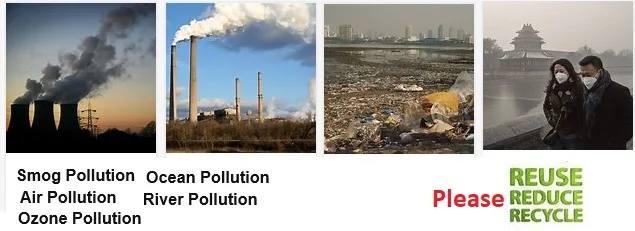Pollution is the introduction of contaminants into the natural environment that cause adverse change.
- Pollution can take the form of chemical substances or energy, such as noise, heat or light. Pollutants, the components of pollution, can be either foreign substances/energies or naturally occurring contaminants.
Keep in mind that the fashion industry is more than just manufacturing. The industry includes farming, transportation, warehousing, retailing, etc. The production and distribution of the crops, fibers, and garments used in fashion all contribute to differing forms of environmental pollution, including water, air, and soil pollution.
Incredible amounts of energy are needed to produce all that hot water and steam required to dye and finish the fabric, as well as to turn those reams of cloth into the styles of our favorite brands.
OK being the second largest polluter is horrible. But it is also fair to point out that fashion is one of the largest industries on the planet. Being scored as number two in pollution needs to be put into perspective based on the size of the industry as a whole. The bottom line is that "all" industries must do their best to reduce the creation of pollution as best possible.
Growth of the multi billion dollar apparel industry (or is it multi-trillion dollar) has been partly fed by "fast fashion," which makes clothing quickly & with a low price-tag. Fast fashion is a result of the consumers desire to have new trends satisfied in a very quick fast manner. We should all try to limit consumption as well as recycle textile fibers, clothing, buttons, hangers, shoes, and fashion accessories.
What are the facts about fashion industry pollution?
It is challenging to find large amounts or accurate data available on emissions and pollution generated by the global fashion industry. This is partly due to a long and complex global supply chain that is international in scope. The supply chain consists of cotton farming, sheep herding, textile fibers manufacturing, dyeing, printing, bleaching, sewing, transportation, and the list goes on and on.
If you know any facts about pollution caused by the fashion industry, please add to the comments section of this post.
Learn more about the complexity of the fashion industry from the following links:
Fashion Industry History
Fashion Industry Overview
Fashion Business
Fashion Industry News
You can read more about pollution in the fashion industry at Wikipedia.
It is important to move toward sustainable fashion.
Sustainable fashion, also called eco fashion, is a part of the growing design philosophy and trend of sustainability, the goal of which is to create a system which can be supported indefinitely in terms of human impact on the environment and social responsibility.
Learn more about recycling clothing.
Next time you plan on shopping for fashion, you may want to visit the consignment shops first.
Do you have suggestion on ways to reduce fashion industry pollution?
You may have interest in also reading our Fashionphile blog post. They sell previously owned handbags and other products. In addition to learning about Fashionphile, you can learn about other used clothing retailers in our fashion retail section. Purchasing used products is a way of recycling.
Apparel Search is formally requesting that you reuse, reduce, and recycle.
Learn about going green with fashion.
Thank you for taking the time to read this fashion blog post about fashion industry pollution. Again, "all" industries need to do their part to help reduce pollution. We hope that you have found this fashion blog post to be educational. If you have comments, questions or suggestions about how to improve, please add your thoughts in the discussion area below.
